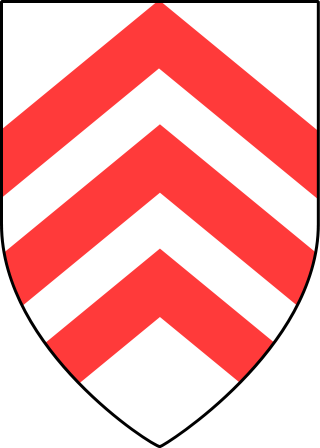
Volksgrenadier, also spelt Volks-Grenadier, was the name given to a type of German Army division formed in the autumn of 1944 after the double loss of Army Group Centre to the Soviets in Operation Bagration and the Fifth Panzer Army to the Western Allies in Normandy. The name itself was intended to build morale, appealing at once to nationalism (Volk) and Germany's older military traditions (Grenadier). Germany formed 78 VGDs during the war. Volksgrenadier divisions were professional military formations with standardized weapons and equipment, unlike the unrelated Volkssturm militia.

The 78th Infantry Division, later known as the 78th Assault Division, was a German infantry formation which fought during World War II. After the 78th Assault Division was destroyed near Minsk in July 1944, the 78th Volksgrenadier Division was created.

The 61st Infantry Division was a combat division of the German Army during the Second World War. Towards the end of the war, it became the 61st Volksgrenadier Division.

The 6th Infantry Division was a unit of the German Army during World War II.
The 562nd Grenadier Division was an infantry division of Nazi Germany's Wehrmacht.

The 272nd Volksgrenadier Division, was a German Army Volksgrenadier division formed following the defeats of the Normandy Campaign in 1944. Composed of men taken from existing Heer (army) units and airmen and sailors retasked to infantry duties, the division fought on the retreating Western Front until it was largely encircled in the Ruhr Pocket in April 1945.

The 31st SS Volunteer Grenadier Division was a German infantry division of the Waffen-SS during the Second World War, commanded by SS-Brigadeführer, Gustav Lombard. The division was formed of German, Hungarian, Serbian and other Volksdeutsche, mostly from the Batschka region as well as the personnel and equipment from the 23rd Waffen Mountain Division SS 'Kama'. By 26 October 1944, Army Group South deployed the division to the frontlines to assist in securing the Danube, despite its complete lack of heavy weapons, inadequate training and weaponry. During the division’s stay in Lower Styria, an order from 16 January 1945 reorganised the division from a Type 1944 division into a Type 1945 division. A month later on 17 February 1945, orders were given for the immediate transfer of the division to Silesia in the Görlitz area in preparation for an upcoming offensive operation. Portions of the division were still under the 17th Army's command in the Hirschberg region, incorporated into their order of battle as army reservists.

The 47th Volksgrenadier Division was a volksgrenadier division of the German Army during the Second World War, active from 1944 to 1945.

The 340th Volksgrenadier Division was a volksgrenadier division of the German Army during the Second World War, active from 1944 to 1945.

The 363rd Volksgrenadier Division was a volksgrenadier division of the German Army during the Second World War, active from 1944 to 1945.
The 18th Volksgrenadier Division was a volksgrenadier division of the German Army during the Second World War, active from 1944 to 1945.
The 62nd Volksgrenadier Division was a volksgrenadier division of the German Army during the Second World War, active from 1944 to 1945.
The 560th Volksgrenadier Division was a volksgrenadier division of the German Army during the Second World War, active from 1944 to 1945.

The 276th Volksgrenadier Division, initially known as the 276th Infantry Division, was a volksgrenadier division of the German Army during World War II, active from 1944 to 1945.

The 45th Infantry Division was an infantry division of the army of Nazi Germany during World War II. Towards the end of the war, the division was reassembled into a second iteration, the 45th Volksgrenadier Division
The 708th Infantry Division was a German Army infantry division in World War II.

The 31st Infantry Division was a German infantry division of the Army during World War II. It participated in the invasion of Poland in 1939 then the invasion of France and the Low Countries in 1940. As part of Panzergruppe 2. of Army Group Centre, it was involved in the invasion of the Soviet Union in June 1941. After hard fighting throughout 1941 and 1942 it joined the 9th Army and fought in the Battle of Kursk in July and August 1943. Along with the rest of the 9th Army, the division conducted a fighting withdrawal for the remainder of 1943, during which it sustained heavy casualties. In the early stages of the Soviet Operation Bagration of June to August 1944, the 31st Infantry Division was destroyed, a fate which subsequently befell most of Army Group Centre. The division was officially disbanded on 18 July 1944.

The Battle of Berlin was the final major campaign of the European Theatre of World War II, fought between Nazi Germany's Wehrmacht and the Soviet Union's Red Army. It began with the Battle of the Seelow Heights on 16 April 1945 and concluded with the Battle in Berlin.
The 271st Infantry Division was an infantry division of the German Heer during World War II.
The 544th Volksgrenadier Division was a Volksgrenadier-type infantry division of the German Wehrmacht during World War II. It was active from July 1944 to May 1945. In the first two months of service, the division was designated 544th Grenadier Division.













